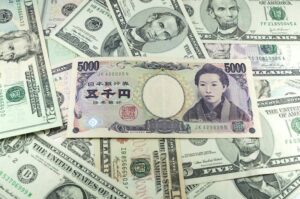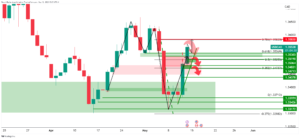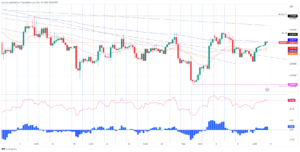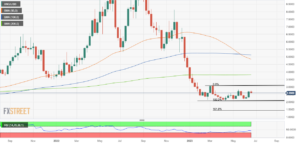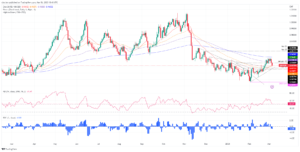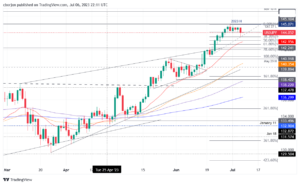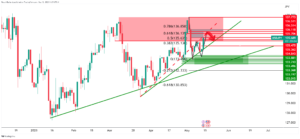
The Bank of Japan (BoJ) Board members shared their views on monetary policy outlook and Yield Curve Control (YCC), per the BoJ Minutes of the December meeting.
Key quotes
“Members agreed must patiently maintain an easy policy.”
“Many members said must confirm a positive wage-inflation cycle in order to consider ending negative rates, YCC.”
“A few members said a decision on whether positive wage-inflation cycle is in place must be made comprehensively, not at looking at particular data.”
“A few members said don't see the risk of BOJ being behind the curve, can wait for developments in this spring's annual wage talks.”
“One member said even if wage hikes in 2024 overshoot expectations, risk of trend inflation sharply deviating 2% was small.”
“One member said Japan's inflationary pressure subsiding, important to carefully scrutinize wage, price moves.”
“One member said BOJ can spend ample time determining wage-inflation cycle as it has already addressed side-effects of YCC.”
“One member said the timing to normalize monetary policy was nearing.”
“One member said BOJ must not miss the opportunity to change policy to prevent rising inflation from hurting consumption.”
“This member said the risk of inflation rising too much and requiring sharp monetary tightening was small, but if this happens the cost would be enormous.”
“Members agreed what means, and what order, BOJ would end negative rates and YCC must be decided to look at the economy, price, market moves at the time.”
Market reaction
Following the BoJ Minutes, USD/JPY was up 0.04% on the day at 147.77.
Bank of Japan FAQs
The Bank of Japan (BoJ) is the Japanese central bank, which sets monetary policy in the country. Its mandate is to issue banknotes and carry out currency and monetary control to ensure price stability, which means an inflation target of around 2%.
The Bank of Japan has embarked in an ultra-loose monetary policy since 2013 in order to stimulate the economy and fuel inflation amid a low-inflationary environment. The bank’s policy is based on Quantitative and Qualitative Easing (QQE), or printing notes to buy assets such as government or corporate bonds to provide liquidity. In 2016, the bank doubled down on its strategy and further loosened policy by first introducing negative interest rates and then directly controlling the yield of its 10-year government bonds.
The Bank’s massive stimulus has caused the Yen to depreciate against its main currency peers. This process has exacerbated more recently due to an increasing policy divergence between the Bank of Japan and other main central banks, which have opted to increase interest rates sharply to fight decades-high levels of inflation. The BoJ’s policy of holding down rates has led to a widening differential with other currencies, dragging down the value of the Yen.
A weaker Yen and the spike in global energy prices have led to an increase in Japanese inflation, which has exceeded the BoJ’s 2% target. Still, the Bank judges that the sustainable and stable achievement of the 2% target has not yet come in sight, so any sudden change in the current policy looks unlikely.
- SEO Powered Content & PR Distribution. Get Amplified Today.
- PlatoData.Network Vertical Generative Ai. Empower Yourself. Access Here.
- PlatoAiStream. Web3 Intelligence. Knowledge Amplified. Access Here.
- PlatoESG. Carbon, CleanTech, Energy, Environment, Solar, Waste Management. Access Here.
- PlatoHealth. Biotech and Clinical Trials Intelligence. Access Here.
- Source: https://www.fxstreet.com/news/boj-minutes-agreed-to-patiently-maintain-easy-policy-202401260027
- :has
- :is
- :not
- $UP
- 19
- 2%
- 2013
- 2016
- 2024
- 31
- 32
- 33
- 39
- 77
- a
- achievement
- addressed
- against
- agreed
- already
- Amid
- an
- and
- Animate
- annual
- any
- around
- AS
- Assets
- At
- Bank
- bank of japan
- Bank of Japan (BoJ)
- Banknotes
- Banks
- based
- BE
- behind
- being
- between
- board
- boj
- BoJ Minutes
- Bonds
- but
- buy
- by
- CAN
- carefully
- carry
- caused
- central
- Central Bank
- Central Banks
- change
- come
- Confirm
- Consider
- consumption
- content
- control
- controlling
- Corporate
- Cost
- country
- currencies
- Currency
- Current
- curve
- cycle
- data
- day
- December
- decided
- decision
- depreciate
- determining
- developments
- directly
- Divergence
- don
- doubled
- down
- due
- easing
- easy
- economy
- embarked
- end
- ending
- ends
- energy
- energy prices
- enormous
- ensure
- Environment
- Even
- exceeded
- expanded
- expectations
- FAQ
- few
- fight
- First
- For
- from
- Fuel
- further
- Global
- Government
- government bonds
- happens
- Have
- Hikes
- holding
- HTTPS
- if
- important
- in
- Increase
- increasing
- inflation
- Inflation rising
- Inflationary
- interest
- Interest Rates
- introducing
- issue
- IT
- ITS
- Japan
- Japanese
- Japanese inflation
- jpg
- judges
- Led
- levels
- Liquidity
- Look
- looking
- LOOKS
- made
- Main
- maintain
- mandate
- Market
- market moves
- massive
- means
- meeting
- member
- Members
- minutes
- miss
- module
- Monetary
- Monetary Policy
- monetary tightening
- more
- moves
- much
- must
- nearing
- negative
- negative interest rates
- Notes
- of
- on
- Opportunity
- or
- order
- Other
- out
- Outlook
- particular
- patiently
- peers
- per
- Place
- plato
- Plato Data Intelligence
- PlatoData
- policy
- positive
- pressure
- prevent
- price
- Prices
- printing
- process
- provide
- qualitative
- quantitative
- Rates
- recently
- rising
- Risk
- s
- Said
- see
- Sets
- shared
- sharp
- Sight
- since
- small
- So
- spend
- spike
- spring
- Stability
- stable
- starts
- Still
- stimulate
- stimulus
- Strategy
- such
- sudden
- sustainable
- T
- Talks
- Target
- that
- The
- their
- then
- this
- tightening
- time
- timing
- to
- too
- Trend
- unlikely
- value
- views
- wage
- wait
- was
- weaker
- What
- whether
- which
- with
- would
- Yen
- yet
- Yield
- yield curve
- yield curve control
- zephyrnet

